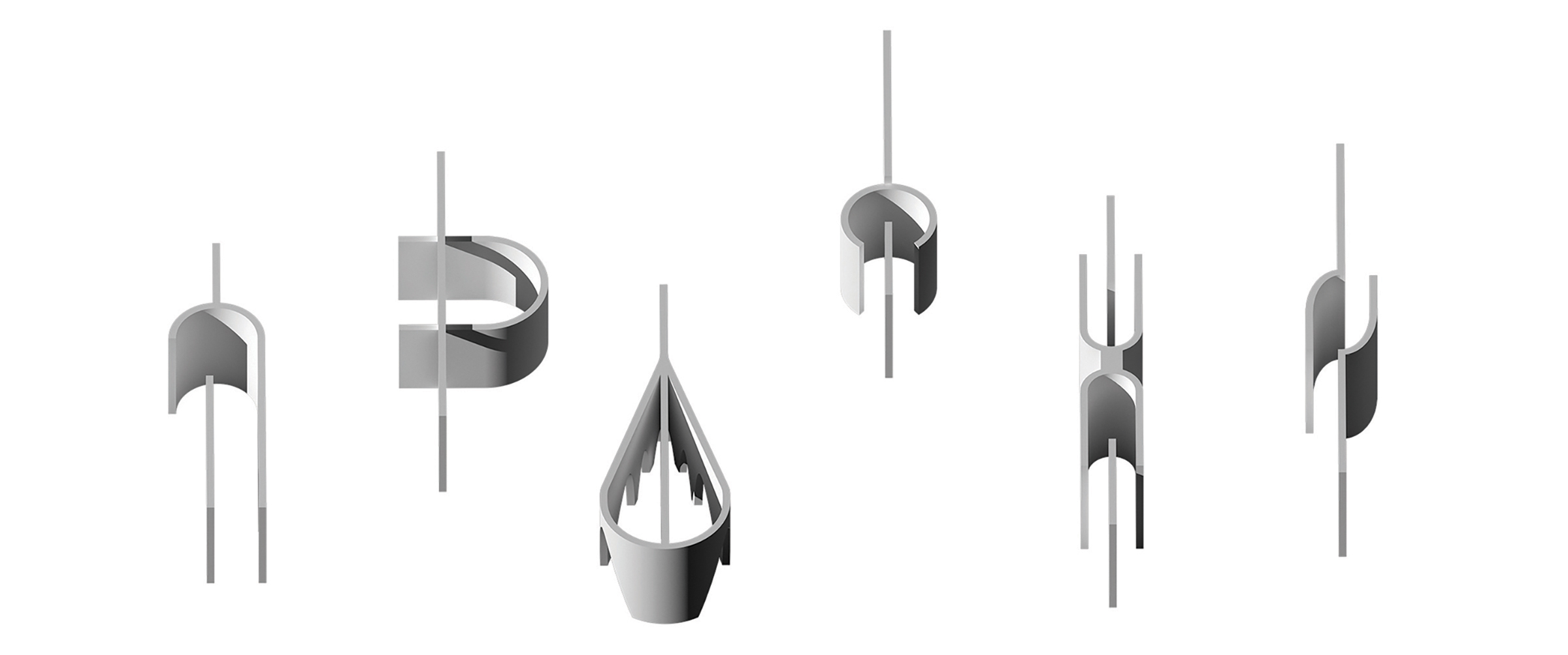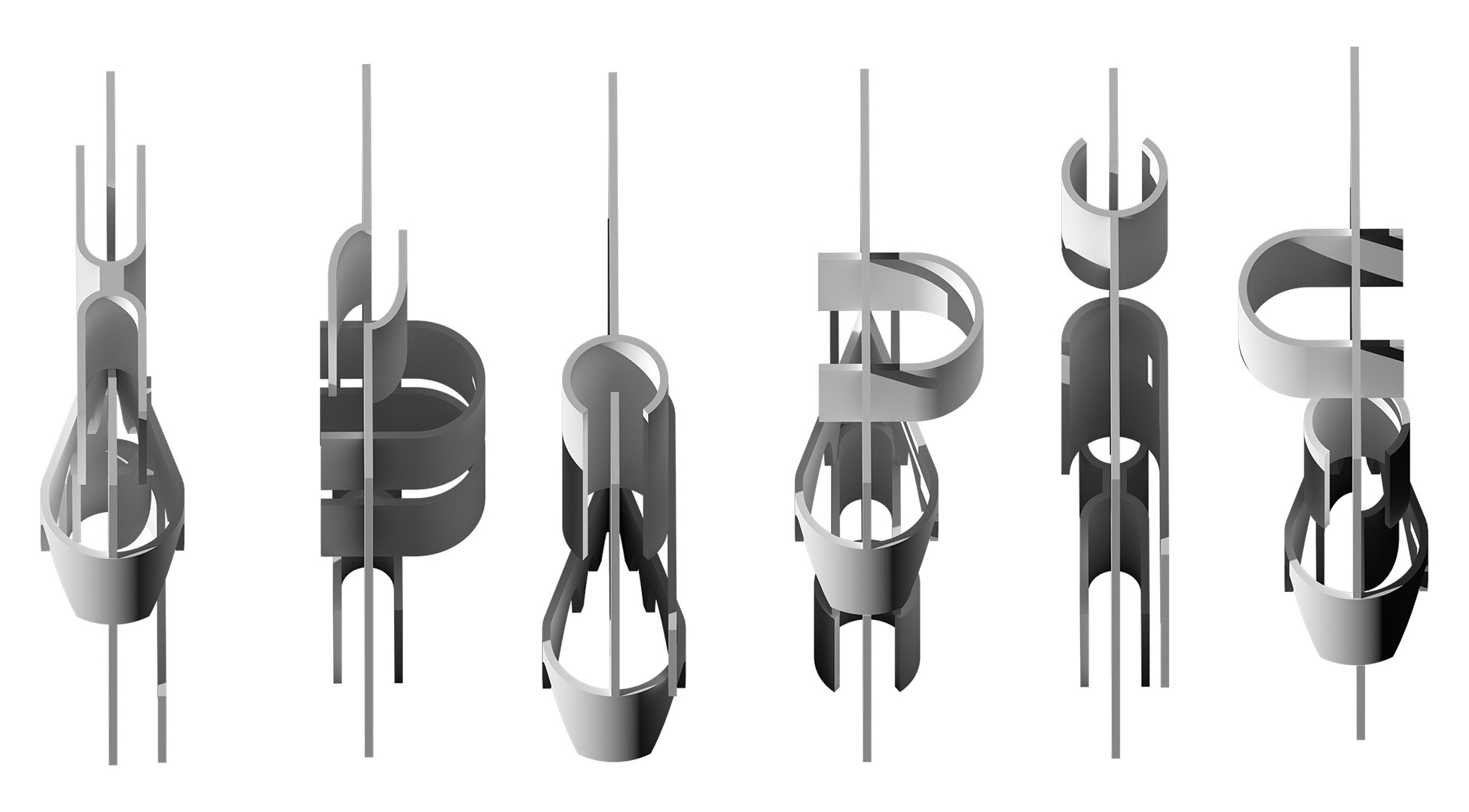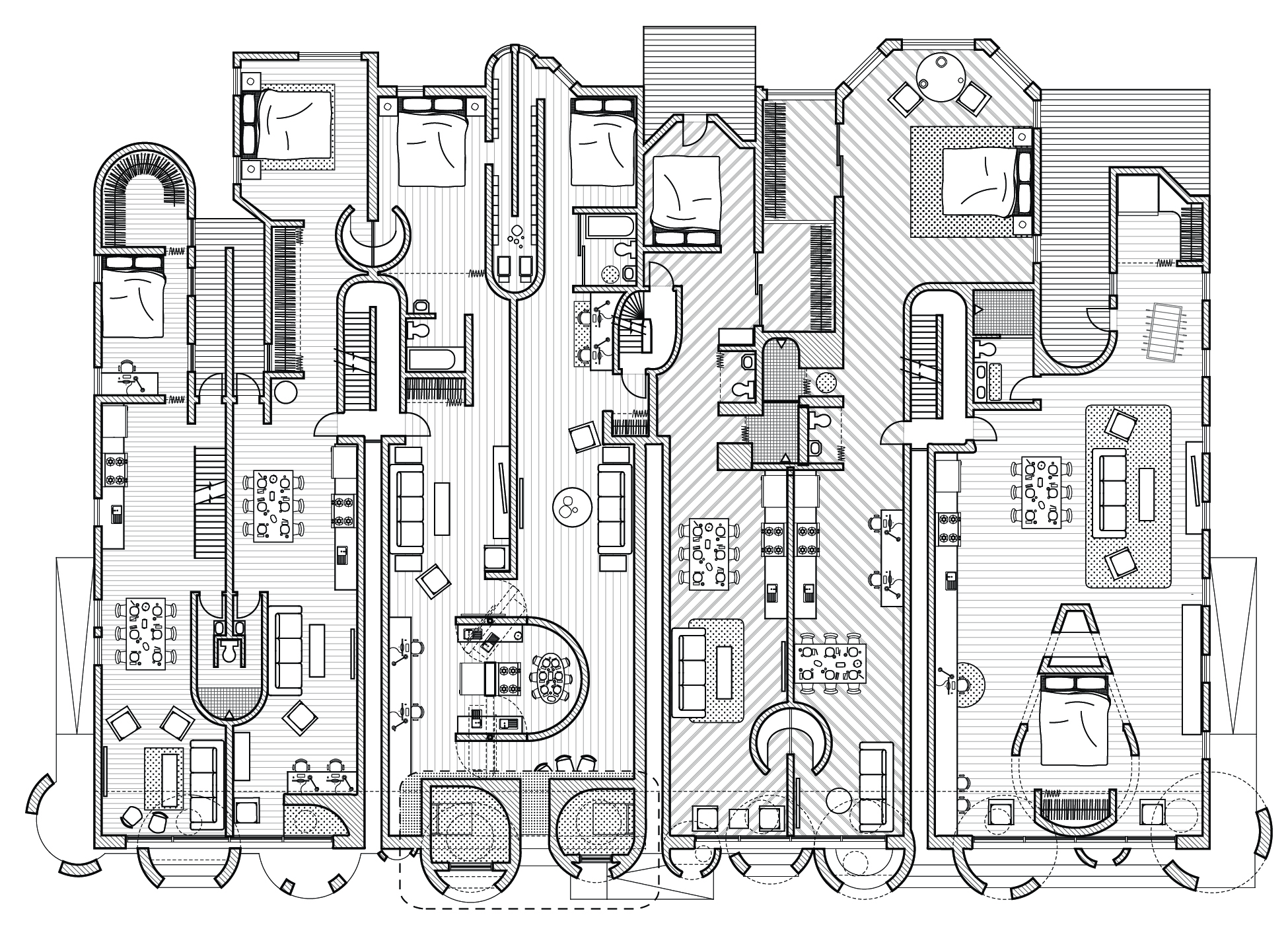

There is an old tale of two young lovers (Pyramus and Thisbe) seperated by a wall dividing their two feuding families in contiguous houses. The two young lovers whisper to eachother through a crack in the wall and devise a plan to flee their homes and escape into their forbidden love. As old tales go, however, it ends in tragedy. Yet this tale, adapted many times over including by Shakespeare, illuminates an architectural consideration; the party wall is an element that both unifies and divides.


The party wall synthesizes yet seperates. As perhaps the most urban of all architectual elements, the seriality of the party wall is simultaneously a source for urban ordering, planning policies, legal debate, and neighborly interactions. Here, the party wall is reconceptualized as an architectural element fostering new imaginations and other forms of neighborliness. Discontinuous in both the vertical and horizontal dimensions, these party walls offer shared spaces and amenities between adjacent units. The exterior is fronted by a colonnade, which on the interior form a series of front rooms, skylights, and occuli.



From the exterior a series of arch-cut cylinders with conical tops create a ‘veil’ that breakup the mass of the rowhouses while also creating a more porous condition at the urban ground plane as an informal colonnade. The cones on top serve as light wells that bring natural light into the top floors of each house.
Status: Unbuilt